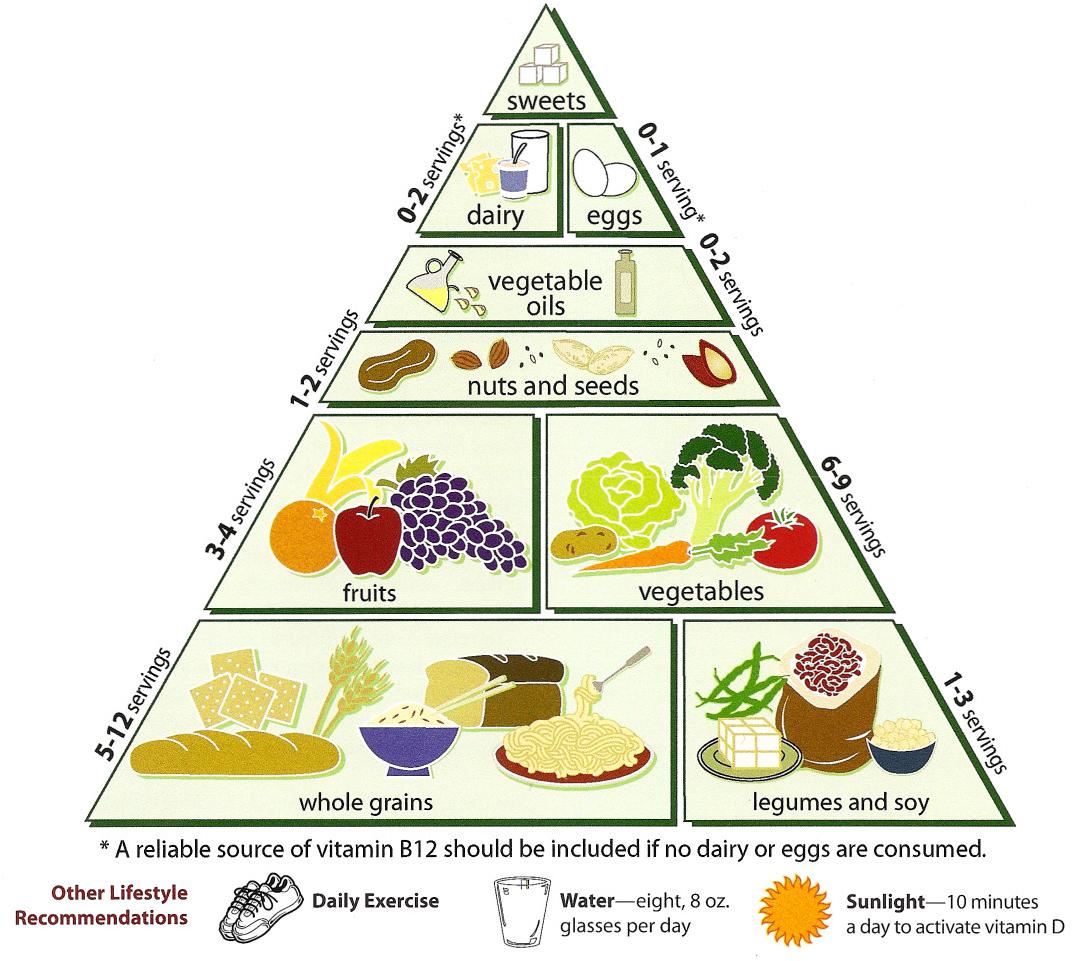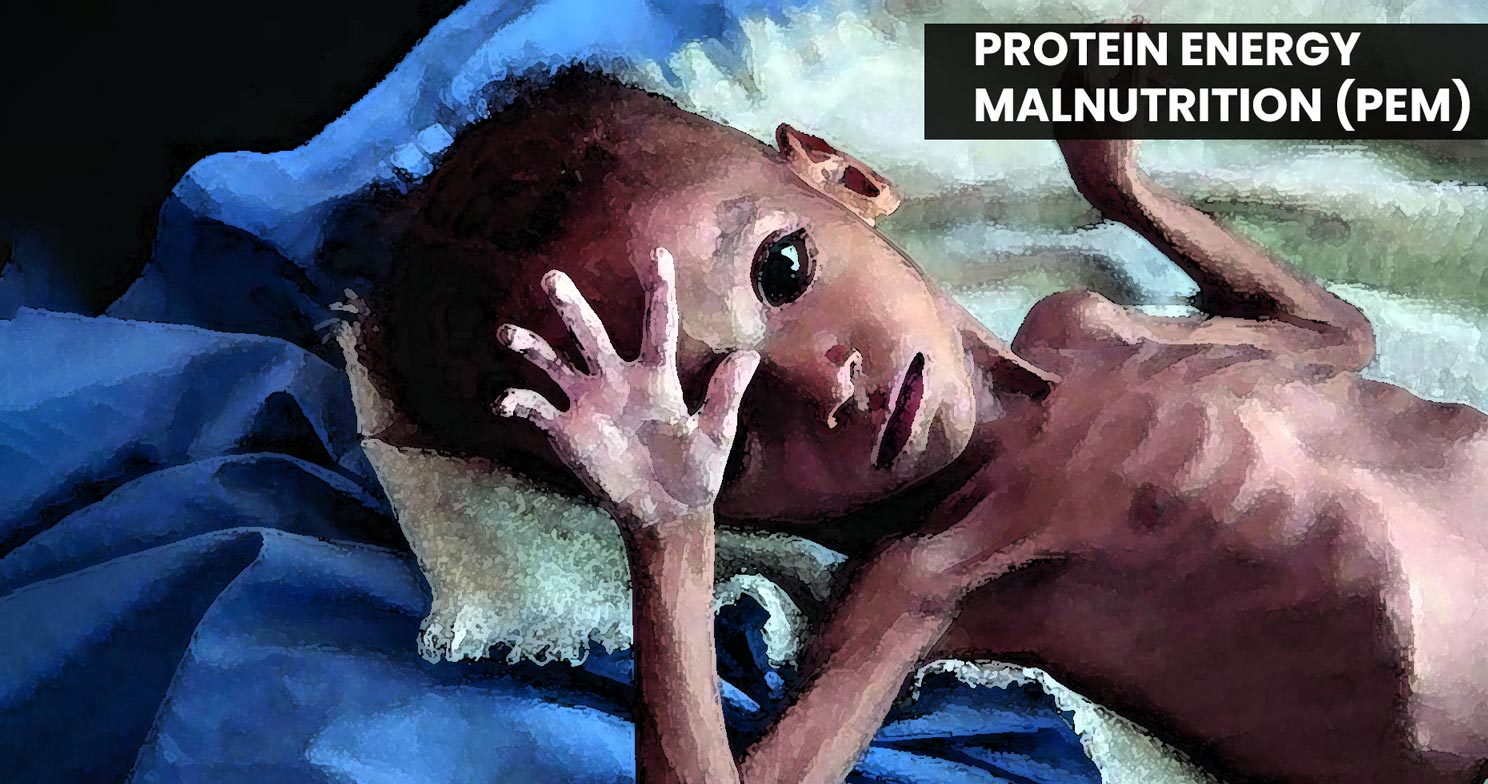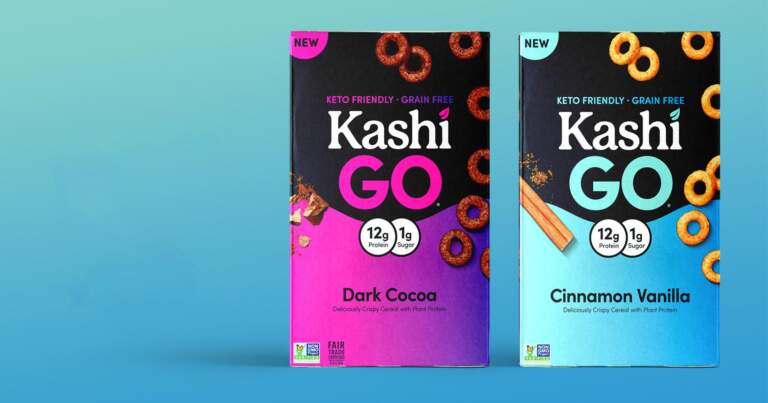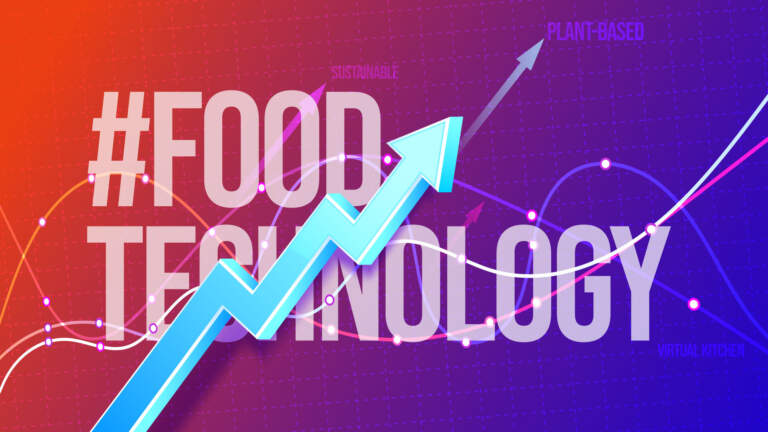Protein-energy malnutrition is defined as a range of pathological conditions arising from lack of varying proportions of protein and calories, occurring most frequently in infants and young children and often associated with infection (WHO 1973). The peak prevalence of kwashiorkor was frequently seen in the age group of 2-3 years and marasmus in 1-2 years.
PEM occurs when inadequate protein or calories are inadequate to meet nutritional requirements. Protein-energy malnutrition occurs as a result of inadequate food intake or secondary as a result of illness.
The term Protein-energy malnutrition certainly covers a wide spectrum of clinical stages ranging from severe form like kwashiorkor and marasmus to the milder form in which the main detectable manifestation is growth retardation. PEM is due to food gap between intake and requirement. The average energy deficit in Indian children is 300kcal/day.
The prevalence rate of Protein-energy malnutrition is 3-5%. For every 3-5 cases of severe PEM, we can also detect 80-90 cases of mild to moderate PEM and about 10% of well-nourished children.
Cicely Williams introduces the term kwashiorkor first in 1935. However, Severe Acute Malnutrition (SAM) or severe wasting is low weight for height. SAM remains one of the major killers of children under five.
The Indian Academy of Pediatrics recommended diagnostic criteria (2007) adapted from earlier WHO guidelines are weight for height/ length below 70% or visible severe wasting or bipedal edema, criteria may also be used for identifying severe wasting.
Malnutrition can be in the form of underweight(weight/age), stunting or (height/age), wasting(weight/height).
Causes for underweight for age
- Due to poverty, the mother is not able to provide sufficient food to children resulting in undernutrition.
- The starchy gruels made up of local staple food like rice, wheat, ragi, bajra, would result in dietary bulk with a low-calorie density hence may not meetup requirement.
- Abrupt weaning, late weaning the importance of weaning can result in undernutrition.
- Malnutrition can result in less enzyme synthesis and less appetite leading to less consumption of food.
- Chronic infections like primarily complex may result in Anorexia.
- Infestation like Ascariasis particularly giardiasis may lead to Anorexia.
Etiology of Protein-energy malnutrition (PEM)
- Inadequate medical facilities.
- poverty and, ignorance illiteracy.
- Maternal malnutrition.
- Poor hygiene, sanitation water supply.
- Occult infectious diseases.
- Early weaning from breast.
- Late weaning.
- High birth rate.
- Low birth weight.
Types of Protein-energy malnutrition (PEM).
Kwashiorkor: Oedema of face and lower limbs, failure to thrive, anorexia, diarrhea, apathy, dermatosis (hypo and hyperpigmentation) flaky paint appearance, sparse, soft and thin hair, angular stomatitis, cheilosis, and anemia.
Marasmic Kwashiorkor: These children exhibit a mixture of some of the features of both marasmus and kwashiorkor.
Marasmus: Failure to thrive-means children whose weight or rate, irritability, fretfulness, and apathy are common. As a result, their weight is persistently below the third percentile of age or less than 80% of the ideal weight of age. So, diarrhea is frequent.
Many are hungry but some may be anorexic. The child is shrunk and there is also little or no subcutaneous fat. In addition, There is often dehydration. The temperature is subnormal. However, Watery diarrhea and acidic stool mat be present. The muscles are week and atopic, as a result, make the limbs appear as skin and bones.
Nutrition dwarfing: Moreover, Children adapt to prolong insufficiency of food-energy and protein due to marked retardation of growth.
The underweight child: Subsequently, The children are growing up smaller than their generic potential and of greater importance as they are at risk of gastroenteritis, respiratory and other infections.
Nutritional requirement in Protein-energy malnutrition (PEM)

The diet should be rich in protein of good quality and high in calories.
Foods of animal origin are not essential. Also, Foods of vegetable origin are
almost as good. Most importantly the response of children with kwashiorkor is more dramatic and more rapid than the children with marasmus who take a much longer time to respond as weight gains are concerned.
Energy: The child should be given 150-200Kcal/Kg of existing body weight /day. The children less than 2 years 200Kcal/Kg body weight and for older children’s 150-175 Kcal/Kg body weight should be given. It is very important to provide enough calories or protein will be utilized for energy purposes not for building tissues.
Protein: For the existing weight five grams of protein/Kg body weight /day should be given. The calories derived from protein should be 10% of the total calculated calories per day if the main source is animal protein.
Protein: For the existing weight five grams of protein/Kg body weight /day should be given. The calories derived from protein should be 10% of the total calculated calories per day if the main source is animal protein.
Fats: Forty percent of total calories are from fats which is permitted by children, unsaturated fats worsen diarrhea.
Electrolytes: Potassium chloride (2.4g) and magnesium chloride(0.5g) should be added daily to the diet for a period of 2 weeks.
Vitamins: If vitamin A deficiency is present, oral administration of a single dose of 50,000 IU of fat-soluble vitamin A should be given immediately, followed by 500 units daily. So, The deficiency symptoms disappear in about 2 weeks.
Treatment
Treatment strategy can be divided into the following 3 stages
- Solving the life-threatening condition.
- Replace nutritional status without disrupting homeostasis.
- Ensuring nutritional rehabilitation.
Low-cost recipes for children recovering from PEM
- Ragi, green gram, jaggery: Puttu
- Ragi, Bengal gram, wheat: Puttu
- Bengal gram, milk, jaggery: payasam.
- Rice, Bengal gram: porridge
- Red gram, spinach: dal
- Wheat Rava, green gram dhal: vegetable Upma.
- Malted wheat, green gram, and groundnut powder (chapati, gruel, or laddu with jaggery).
- Rice, green gram dhal: Pongal/kichadi.
- Idly with sugar.
Suggested diet during convalescence:
- Increasing the quantity of existing foods(like idlis, rice, chapatis)
- Increasing the number of meals to satisfy calorie and protein requirements.
- In Addition to oil and ghee 1-2tsp to increase calories without increasing bulk.
- Consumption of sugar can be increased to increase the calories in the diet.
- The child can also be given cereal and pulse mixture.
- If the patient can afford milk, egg and skim milk can be included in the diet
Sources
- Brewster D.R.,2006, Critical Appraisal of management of Severe Malnutrition, Journal of pediatrics and Child Heath.
- Severe Acute malnutrition, 2010, Indian pediatrics, 47
- WHO manual on Severe malnutrition.
- B. Srilakshmi, Nutrition and food requirement for preschool children, Dietetics(2011), New age International (P) Limited.




Leave a Comment